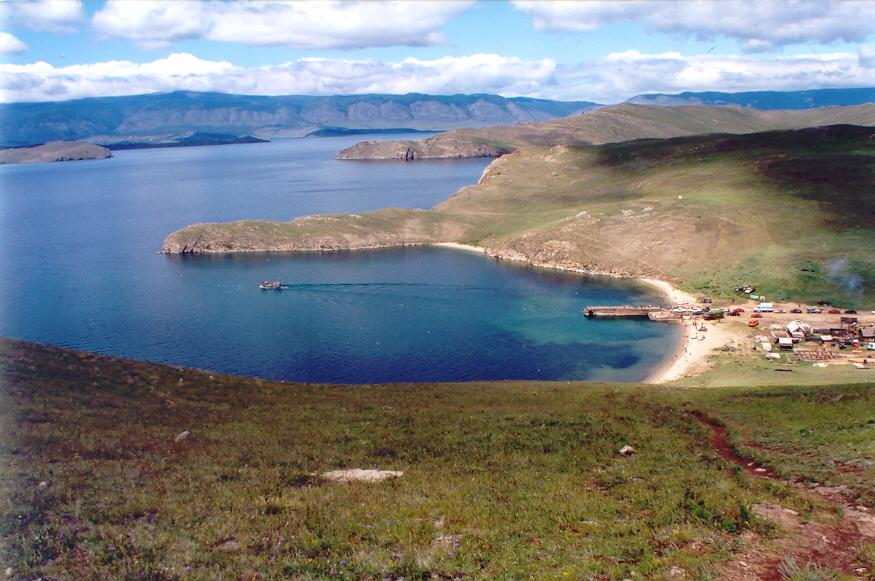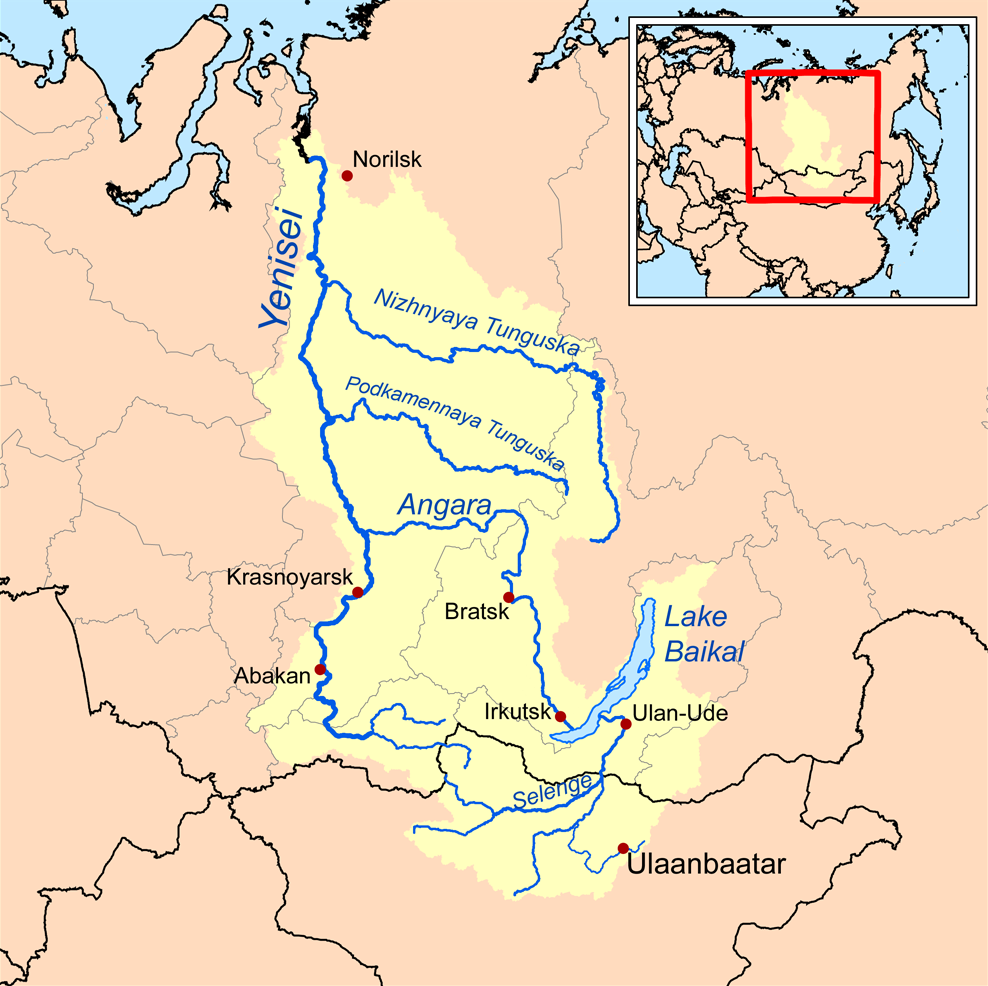|
Olkhon
Olkhon (, also transliterated as Olchon; , ''Oikhon'') is the third-largest lake island in the world. It is by far the largest island in Lake Baikal in eastern Siberia, with an area of . Structurally, it constitutes the southwestern margin of the Academician Ridge. The island measures in length and in width. There are two versions regarding the origin of the name of the island and both are derived from the language of the Buryats, the indigenous people of Olkhon. The first is that the island's name comes from the word ''oyhon'' – “woody”, and the second is that it comes from ''olhan'' – “dry”. It is still debated which of the two is the actual origin of the name Olkhon as both words describe the island perfectly. Much of the island is still covered by forests and the amount of precipitation is extremely low – about per year. Geography Olkhon has a dramatic combination of terrain and is rich in archaeological landmarks. Steep mountains line its eastern shor ... [...More Info...] [...Related Items...] OR: [Wikipedia] [Google] [Baidu] |
Lake Baikal
Lake Baikal is a rift lake and the deepest lake in the world. It is situated in southern Siberia, Russia between the Federal subjects of Russia, federal subjects of Irkutsk Oblast, Irkutsk Oblasts of Russia, Oblast to the northwest and the Republic of Buryatia to the southeast. At —slightly larger than Belgium—Lake Baikal is the world's List of lakes by area, seventh-largest lake by surface area, as well as the second largest lake in Eurasia after the Caspian Sea. However, because it is also the List of lakes by depth, deepest lake, with a maximum depth of , Lake Baikal is the world's List of lakes by volume, largest freshwater lake by volume, containing of water or 22–23% of the world's fresh surface water, more than all of the North American Great Lakes combined. It is also the world's ancient lake, oldest lake at 25–30 million years, and among the clearest. It is estimated that the lake contains around 19% of the unfrozen fresh water on the planet. Lake Baikal ... [...More Info...] [...Related Items...] OR: [Wikipedia] [Google] [Baidu] |
Olkhon Gate
Olkhon Gate (, ''Olkhonskie Vorota'') is a strait of Lake Baikal, Russia. It separates the south-west of Olkhon Island from the western shore of Baikal. In the north the strait opens out into the Maloe More strait, and to the south into the central open Baikal. Its length is about 8.3 km, width is 1.2 - 2.3 km. Average depth is 30 – 40 m, at the south of the strait the depth reaches 100 m. There is a rather strong current in the strait, and the waves can reach 5 m in height. The banks of the strait are mostly steep and precipitous, the shoreline is a rugged with long narrow capes and bays. To the north-north-west of the strait the valley of the Sarma River lies, the source of Sarma wind - the strongest wind of the Baikal. In the middle part of the strait the ferry "Sakhyurta (MRS) — Olkhon Island" operates from 15 May to 15 December. In the winter time an ice-road is opened. In 2005 a high-voltage underwater cable was laid at the bottom of the strait, providing O ... [...More Info...] [...Related Items...] OR: [Wikipedia] [Google] [Baidu] |
Shamanka Rock
Shaman Rock, Cape Burhan, or Shamanka is a rock, on Olkhon Island, Lake Baikal, Russia. It is in Pribaikalsky National Park, and is near Khuzhir, Irkutsk Oblast, Khuzhir, the largest city on Olkhon Island. The rock connects to Olkhon Island, though depending on perspective, can appear an island. The rock is considered one of the "Nine Holy Sites of Asia". (in Russian) On the rock The height of the part of the rock closest to the shore is , and the height of the far part is . (in Russian) In the near-bank part of the rock is the Shaman Cave, which formed via weathering and erosion. The length of the cave is about , and the width is from to . The height of the cave is from to . On the western side of the surface of the back of the rock there is a natural brown rock formation resembling a dragon. See also * Buddhism * Maloe More * Tibetan Buddhism References External links * Olkhon Island {{IrkutskOblast-geo-stub ... [...More Info...] [...Related Items...] OR: [Wikipedia] [Google] [Baidu] |
Khuzhir, Irkutsk Oblast
Khuzhir () is a rural locality (a settlement) in Olkhonsky District of Irkutsk Oblast, Russia, located on the west side of the Olkhon Island, the largest island in Lake Baikal Lake Baikal is a rift lake and the deepest lake in the world. It is situated in southern Siberia, Russia between the Federal subjects of Russia, federal subjects of Irkutsk Oblast, Irkutsk Oblasts of Russia, Oblast to the northwest and the Repu .... Population: Until June 2014, it had work settlement status. References Rural localities in Irkutsk Oblast Populated places on Lake Baikal Olkhon Island {{IrkutskOblast-geo-stub ... [...More Info...] [...Related Items...] OR: [Wikipedia] [Google] [Baidu] |
Kharantsy, Olkhonsky District
Kharantsy () is a village in the Olkhonsky District of Irkutsk Oblast of Russia, a part of the Khuzhirskiy municipal unit. Located in the middle part of the western coast of Olkhon Island, in 7 km to the north from the municipal unit centre — village Khuzhir. Population: In the village there are several hostels for the tourists ( Turbazas). In the summer a recreation camp for children is operating. Near the village a grass airstrip is located that serves flights to Irkutsk Irkutsk ( ; rus, Иркутск, p=ɪrˈkutsk; Buryat language, Buryat and , ''Erhüü'', ) is the largest city and administrative center of Irkutsk Oblast, Russia. With a population of 587,891 Irkutsk is the List of cities and towns in Russ ... and local sightseeing flights. At the Cape Kharantsy near the village many archaeological findings are made. On its south-eastern slope a burial from the 11th to 15th century was found; in the western part - the remains of settlements dated 5 millenniu ... [...More Info...] [...Related Items...] OR: [Wikipedia] [Google] [Baidu] |
Maloe More
Maloe More (; in English literally ''the Small Sea'') is a strait in Lake Baikal, Russia. It separates the largest island of the lake, Olkhon Island, from the western shore of Baikal. The length of the strait is about 70 km and width 5 – 16 km. The maximum depth is 210 m in the northern part where the strait opens to the open Baikal.Maloe More. Ostrov Olkhon In the south, Maloe More strait is connected through the narrow strait to the central part of the lake. The Tryokhgolovy Golets, highest peak of the [...More Info...] [...Related Items...] OR: [Wikipedia] [Google] [Baidu] |
Buryats
The Buryats are a Mongolic ethnic group native to southeastern Siberia who speak the Buryat language. They are one of the two largest indigenous groups in Siberia, the other being the Yakuts. The majority of the Buryats today live in their titular homeland, the Republic of Buryatia, a federal subject of Russia which sprawls along the southern coast and partially straddles Lake Baikal. Smaller groups of Buryats also inhabit Ust-Orda Buryat Okrug (Irkutsk Oblast) and the Agin-Buryat Okrug (Zabaykalsky Krai) which are to the west and east of Buryatia respectively as well as northeastern Mongolia and Inner Mongolia, China. Traditionally, they formed the major northern subgroup of the Mongols. Buryats share many customs with other Mongolic peoples, including nomadic herding, and erecting gers for shelter. Today the majority of Buryats live in and around Ulan-Ude, the capital of the Buryat Republic, although many still follow a more traditional lifestyle in the countryside. ... [...More Info...] [...Related Items...] OR: [Wikipedia] [Google] [Baidu] |
Lake Island
A lake island is any landmass within a lake. It is a type of inland island. Lake islands may form a lake archipelago. Formation Lake islands may form in numerous ways. They may occur through a build-up of sedimentation as shoals, and become true islands through changes in the level of the lake. They may have been originally part of the lake's shore, and been separated from it by erosion, or they may have been left as pinnacles when the lake formed through a raising in the level of a river or other waterway (either naturally, or artificially through the damming of a river or lake). On creation of a glacial lake a moraine can form an island. They may also have formed through earthquake, meteor, or volcanic activity. In the latter case, crater or caldera islands exist, with new volcanic prominences in lakes formed in the craters of larger volcanoes. Other lake islands include ephemeral beds of floating vegetation, and islands artificially formed by human activity. Volcanic crat ... [...More Info...] [...Related Items...] OR: [Wikipedia] [Google] [Baidu] |
Academician Ridge
Academician Ridge is an underwater, structural high separating two of Lake Baikal's three basins, the Central and North basins. Situated in the central part of the Baikal Rift, it serves as an "accommodation zone", transferring "motion between faults of similar displacement but different orientation" (Hutchinson et al., 1992). The ridge is bounded by two large normal faults, the Primorsky Fault on the northwest and the Olkhon Fault on the southeast, and an oblique-slip fault, the Academician Fault, that runs along the crest of the ridge. The margins of the ridge, Olkhon Island to the southwest and the Ushkanie Islands to the northeast, are above lake level while the center of the ridge is submerged to depths of 350–400 m (Kuzmin et al., 2000). Academician Ridge represents a unique sedimentary environment within Lake Baikal. The depths of the two basins it separates, about 900 m in the North Basin and about 1600 m deep in the Central basin, isolate the ridge from mass-flows and ... [...More Info...] [...Related Items...] OR: [Wikipedia] [Google] [Baidu] |
Kurumchi Culture
The Kurumchi culture or the "Kurumchi blacksmiths" () were the earliest Iron Age archaeological culture of Lake Baikal. Bernhard Petri proposed their existence in the 1920s, speculating that they were the progenitors of the Sakha people. Later, from the 1940s until 1970s, Alexey Okladnikov continued research on the Kurumchi. Renewed research that began in the 1980s into the Kurumchi expanded scholarly understanding of their society. Background Interest in the Sakha (Yakut) people and their cultural origins was minimal until the late 19th century. Political dissident Mikhail P. Ovchinnikov developed his ethnographic and archaeological skills while exiled in Siberia. He interviewed Sakha residents of Olyokminsk about their customs and beliefs. One Sakha account suggests their ancestors were forced north from Lake Baikal to the Lena River. Ovchinnikov also interviewed Buryat informants from Irkutsk, who shared stories of their ancestors displacing a group of blacksmiths from Lak ... [...More Info...] [...Related Items...] OR: [Wikipedia] [Google] [Baidu] |
Shamanism
Shamanism is a spiritual practice that involves a practitioner (shaman) interacting with the spirit world through altered states of consciousness, such as trance. The goal of this is usually to direct spirits or spiritual energies into the physical world for the purpose of healing, divination, or to aid human beings in some other way. Beliefs and practices categorized as shamanic have attracted the interest of scholars from a variety of disciplines, including anthropologists, archeologists, historians, religious studies scholars, philosophers, and psychologists. Hundreds of books and academic papers on the subject have been produced, with a peer-reviewed academic journal being devoted to the study of shamanism. Terminology Etymology The Modern English word ''shamanism'' derives from the Russian word , , which itself comes from the word from a Tungusic language – possibly from the southwestern dialect of the Evenki spoken by the Sym Evenki peoples, or from the ... [...More Info...] [...Related Items...] OR: [Wikipedia] [Google] [Baidu] |






